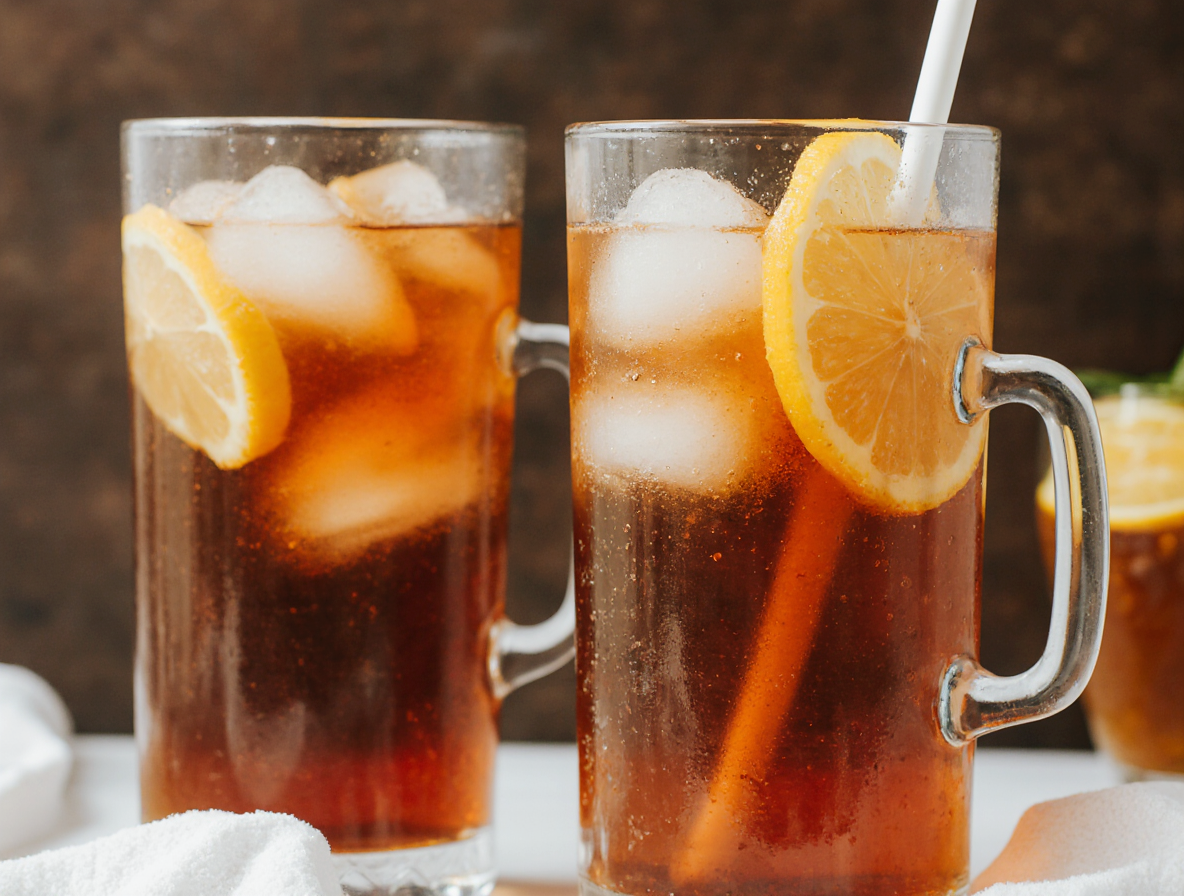When summer arrives, nothing beats knowing how to make sweet tea that sits chilled and ready in the refrigerator. This isn’t just any beverage – it’s a Southern tradition that signals warm weather has officially arrived.
Rather than simply adding a spoonful of sugar to regular iced tea, authentic sweet tea is steeped in large batches and sweetened while hot. In fact, a properly made sweet tea can be incredibly refreshing while remaining guilt-free at just 20 calories per serving. Whether we’re looking for something that tastes like strawberry lemonade mixed with tea or a classic gallon batch that takes only 10 minutes to prep, the perfect sweet tea recipe is surprisingly simple to master.
In this guide, we’ll walk through everything you need to know about creating delicious Southern sweet tea at home – from the basic technique to customization options that will keep your pitcher refilled all season long.
What Makes Southern Sweet Tea Unique
Southern sweet tea stands apart as much more than a mere beverage—it’s deeply woven into the cultural fabric of the American South. Often called “the house wine of the South”, this iconic drink embodies Southern hospitality and has become a defining regional identifier.
Unlike regular iced tea, sweet tea follows a specific preparation method that creates its signature taste. The key distinction lies in adding sugar while the tea is still hot during brewing, allowing the sweetener to dissolve completely. This presweetening process—typically using a substantial amount of sugar—results in a consistently sweet flavor impossible to achieve by adding sugar to cold tea afterward.
Historically, sweet tea underwent a fascinating evolution. Though not originally Southern, it underwent what food historians call “Southernization”—the process by which it became thoroughly identified with the region. Initially made from green tea, World War II supply challenges led to the adoption of black tea, which remains the standard today.
Sweet tea’s rise to Southern prominence coincided with several developments: affordable sugar refinement, commercial ice production beginning in 1868, and later, widespread home refrigeration. Furthermore, during Prohibition, many Southerners embraced sweet tea as an alcohol alternative.
The beverage crosses all social boundaries and serves as a cultural GPS—indicating both where you are and who you are. Indeed, in many Southern restaurants, ordering “tea” automatically gets you the sweet version.
Step-by-Step: How to Make Sweet Tea at Home
Creating perfect sweet tea begins with the right technique. I’ve found that the secret lies in making a concentrated brew first, subsequently diluting it to achieve that signature Southern flavor.
First, gather your equipment: a large pot, stirring spoon, and glass pitcher with a lid. For a gallon of classic sweet tea, you’ll need:
- 4 family-size black tea bags (Luzianne is traditional)
- 1 gallon filtered water, divided in half
- 1 cup granulated sugar (adjust to taste)
- Optional garnishes: lemon slices, mint sprigs, or orange slices
To brew, bring half your water (8 cups) to a boil in your pot. Once bubbling, remove from heat immediately—actively boiling water can make tea bitter. Add tea bags and steep for 3-5 minutes depending on desired strength.
Next, remove the tea bags without squeezing them (this prevents bitterness). Add sugar while the tea is still warm—this is non-negotiable for authentic sweet tea. Stir until completely dissolved.
Pour this concentrated mixture into your pitcher and add the remaining 8 cups of water. Allow it to cool to room temperature before refrigerating.
For serving, fill glasses with ice and pour your sweet tea over it. Add garnishes if desired. Store your tea in a covered glass container and consume within 48 hours for optimal freshness.
Tips to Customize and Perfect Your Sweet Tea
Personalizing your sweet tea opens up endless possibilities beyond the classic recipe. One popular variation is the Arnold Palmer—a refreshing mix of sweet tea and lemonade that’s sometimes called a “half and half”. For the best flavor balance, try using cold-brewed tea as your base and adding freshly squeezed lemon juice with a touch of lemon rind syrup.
Alternatively, experiment with different sweeteners. While granulated sugar remains traditional, consider brown sugar varieties like Demerara for rich molasses notes that pair wonderfully with strong black teas. Honey serves as another excellent option, particularly with fruity or green tea bases.
For fruit-infused variations, add peaches, blueberries, or mangoes directly to your brew. Other excellent combinations include mint with pomegranate or watermelon. Simply muddle or chop the fruit to release flavors, then strain before serving if you prefer no solids.
Cold brewing creates a notably smoother, less bitter tea since the lower temperature doesn’t extract as many tannins. For this method, use 1-2 teaspoons of tea leaves per cup of water, refrigerate for five hours, then strain.
For adult gatherings, consider “spiked” versions with bourbon, vodka, or rum. The Tennessee Fruit Tea—sweet tea enhanced with orange and pineapple juices—offers another regional specialty worth trying.
Conclusion
Sweet tea represents much more than a refreshing summer beverage—it stands as a cultural touchstone that brings the Southern experience to any table. Throughout this guide, we’ve explored the rich history behind this iconic drink and learned why adding sugar while the tea is still hot makes all the difference.
Making sweet tea at home certainly doesn’t require complicated techniques or fancy equipment. Most importantly, the basic recipe serves as just a starting point for countless variations. You might prefer the tangy zip of an Arnold Palmer or enjoy experimenting with fruit infusions like peach or blueberry. Perhaps brown sugar or honey will become your signature sweetener instead of traditional granulated sugar.
Cold brewing offers another wonderful approach for those who appreciate a smoother, less bitter flavor profile. Additionally, adults can enjoy “spiked” versions for special gatherings that elevate this humble beverage to cocktail status.
Therefore, whether you’re a Southerner looking to perfect your family recipe or someone curious about authentic Southern traditions, sweet tea provides a delicious way to connect with this cherished cultural practice. The beauty of sweet tea lies in its simplicity coupled with endless adaptability.
Next time temperatures rise, skip the store-bought versions and instead prepare a batch of homemade sweet tea. Your guests will undoubtedly appreciate this small but meaningful gesture of hospitality—after all, few things say “welcome” quite like a glass of properly made sweet tea served over ice on a warm afternoon.
FAQs
Q1. What makes Southern sweet tea different from regular iced tea? Southern sweet tea is unique because the sugar is added while the tea is still hot during brewing, resulting in a consistently sweet flavor that can’t be achieved by adding sugar to cold tea. It’s also typically made with black tea and served over ice.
Q2. How long should I steep the tea bags when making sweet tea? For the best flavor, steep the tea bags for 3-5 minutes in hot (not boiling) water. The exact time depends on how strong you prefer your tea, but avoid over-steeping to prevent bitterness.
Q3. Can I use different sweeteners instead of granulated sugar? Yes, you can experiment with alternative sweeteners. Brown sugar varieties like Demerara can add rich molasses notes, while honey works well with fruity or green tea bases. Just remember to add the sweetener while the tea is still hot.
Q4. How can I customize my sweet tea recipe? There are many ways to customize sweet tea. You can add fruit infusions like peach or strawberry, create an Arnold Palmer by mixing it with lemonade, or even make adult versions by adding spirits like bourbon or rum. Cold brewing is another method that produces a smoother taste.
Q5. How long can I store homemade sweet tea? For optimal freshness, store your sweet tea in a covered glass container in the refrigerator and consume it within 48 hours. This ensures the best flavor and quality of your homemade beverage.


